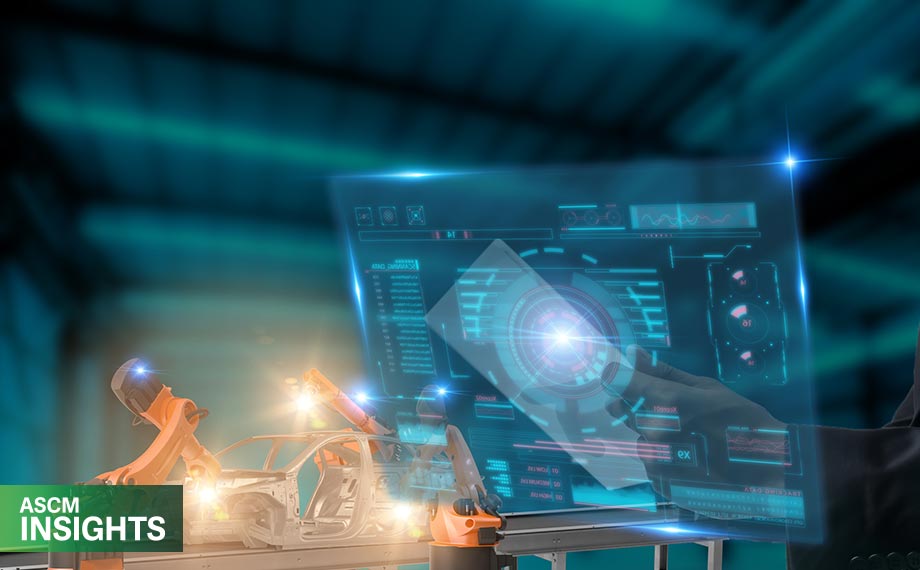On their own, digital twins are relatively powerful and insightful. But with AI as a sidekick, the advantages are significantly amplified. Before exploring the many possibilities, it's important to understand digital twins. According to the ASCM Supply Chain Dictionary, a digital twin is "an exact virtual replica or model of a real-world process, product or service used to digitally simulate, test, model and monitor it.” In other words, a digital twin models a piece of equipment, a facility or an entire supply chain in order to reveal all kinds of valuable information.
AI speeds digital twin data analysis
AI can quickly analyze the vast amount of data generated by sensors and sources within the digital twin to identify trends, anomalies and potential disruptions in real time. Faster analysis means faster decision-making, intervention and goal achievement. For example, international furniture retailer Ikea leveraged an AI-driven digital twin platform to create digital twins of 37 Ikea locations. In nine months, the company managed to model 42 million square feet of space, including 6,000 pieces of HVAC equipment produced by 10 different manufacturers. In modeling and analyzing the information from 7,000 data points, the company was able to reduce its HVAC central supply system’s energy consumption by 30%, which also yielded millions of dollars in savings. This was made possible by the digital twin’s AI component, which enabled advanced simulations of risks and environmental impacts based on site data.
The high-speed data analysis also can analyze historical data to identify patterns and then predict future risks, such as equipment failures, demand fluctuations or transportation delays. When a disruption does occur, AI can perform root-cause analysis to pinpoint the cause of the problem and facilitate faster resolution as well as better prevention. Going a step further, AI also can translate disparate types of data into data sets the digital twin system can understand, giving the system a more informed ecosystem. For example, AI can translate information from maintenance logs, videos of machine operation, photos of equipment and audio into data. The digital twin can then use this information in combination with other data to provide more realistic and accurate modeling of operations and outcomes.
AI enhances knowledge gained from digital twins
AI brings to the table advanced analytics and decision-making capabilities that allow digital twins to self-optimize and self-configure. For instance, through iterative machine learning, AI can evaluate current sensor data and historical data to decide which scenarios the digital twin needs to run. It also can run different simulation scenarios that reveal previously uncovered insights. As the AI-driven digital twins continue to develop and learn, they could ultimately become cognitive or aware. These intelligent systems could automatically detect anomalies or predict faults and recommend intervention before problems occur. These insights could be used to prevent unplanned equipment downtime or be used in a smart building system to monitor and maintain environmental conditions that support optimal comfort and operating conditions as well as regulate energy use.
Smarter systems yield smarter forecasts too. Researchers in the United Kingdom are applying AI-driven digital twin technology to medical forecasting. After training a digital twin on medical data combined with current health data, the model was able to predict a patient’s next health condition with 88% accuracy when applied to U.S. data. The accuracy was a bit lower at 68% and 76% when applied to two different British data sets, but the researchers already are working to improve the overall forecasting accuracy.
AI makes digital twins easier to use
One of the obstacles of using digital twins is the amount of time it takes to create them. According to McKinsey & Co., creating a digital twin for a highly specialized application, such as vehicle routing or multi-machine production scheduling, can take six months or more of labor, computing and server costs. Large language models, a type of generative AI, can create the code for a digital twin, thus significantly reducing the time and labor to create a digital twin. McKinsey adds that this capability could be used to create a foundational, universal model for digital twins that could be used as a base for developers to create their own digital twins.
When digital twins are easier to build, they can be applied to more industries and use cases. For example, digital twins could become a training ground for college students to help them get real-world experience in environments that can’t be simulated in a classroom experience. Lam Research posits that this would be particularly useful in bridging the skills gap for the semiconductor industry. Universities can’t readily work with the latest nanotechnology or safely work with some of the volatile chemistries used in semiconductor development, but easy-to-access digital twins could be a good bridge to prepare students for working in the field.
A symbiotic relationship
Importantly, it’s not just digital twins and their users who benefit from this relationship. AI learns and improves, as well. Digital twins offer AI large stores of robust, contextualized data that can inform large language models. Furthermore, the digital twin offers AI a safe space to learn. Through what-if scenarios within the digital twin, the AI can fine-tune its skills at predictive modeling, for example. The digital twin can validate generative AI’s outputs to ensure it adheres to any constraints of the system, such as machinery temperature or output rate. This capability still is in development, but it could be an effective way to reduce the errors generative AI has been associated with.
In addition, digital twins support organizations in the implementation and rollout of AI resources. McKinsey & Co. estimates that digital twins reduce the amount of time needed to deploy new AI capabilities by 60% and cut operating expenses by as much as 15%. In line with this, 75% of large enterprises are investing in digital twins to scale AI solutions.
Digital twins and AI make each other stronger. They build on each other’s capabilities to unlock new benefits for functionality and efficiency. Together they can run more simulation scenarios than previously possible, run scenarios faster, enhance scalability, forecast more accurately, and deliver users with faster and more accurate analysis that supports better decision-making.
Learn more about digital twins, artificial intelligence and other technologies with the ASCM Supply Chain Technology Certificate. This industry-leading education prepares you to master the latest supply chain technology.


